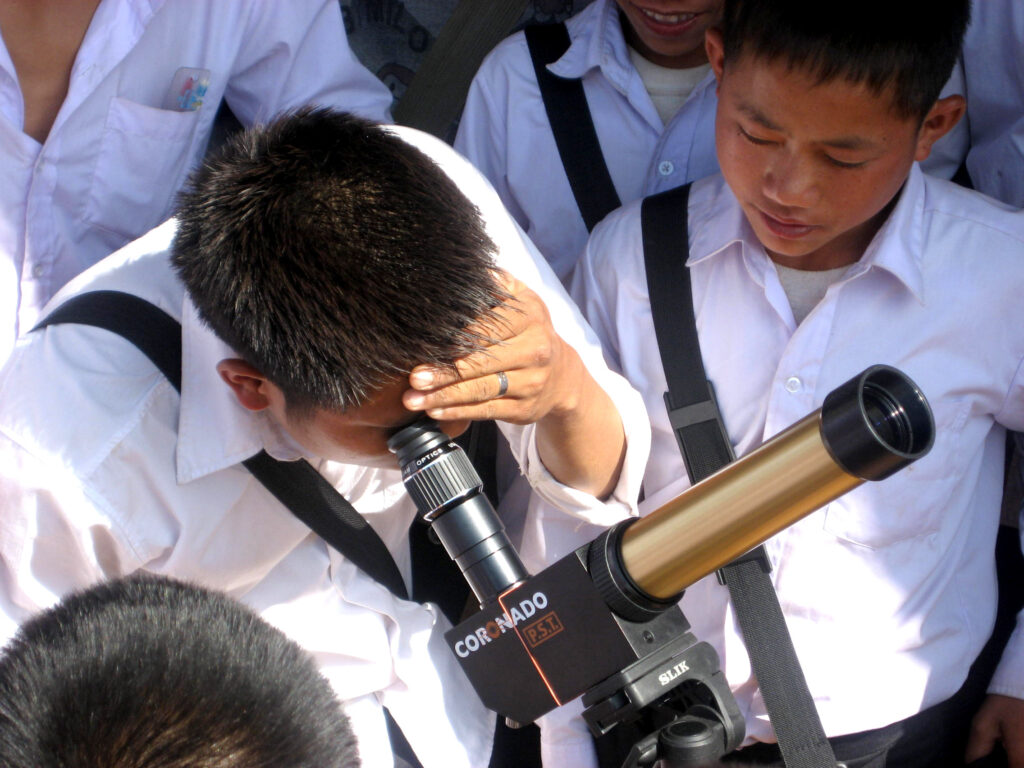
I’m going to tell you about something you can see in the sky this coming week, but first, I’m gonna hand things off to pre-recorded Erik who will explain how to make a pinhole solar viewer so you can safely view the Sun without spending seven hundred dollars on an h-alpha telescope.
For those of you listening to us in podcast form, the video will be available on our website, DailySpace.org. Thanks, Past Erik, and Ally who is gonna have to edit all this together.
Before we get too far away from solar observing, two notes. First, the solar maximum is the top of the eleven-year solar cycle, when the Sun is the most active with sunspots and prominences. Hence all the notifications we are getting about solar flares of varying strengths.
Second, you can use your ordinary telescope to observe the Sun in more detail than looking at a paper plate. There are many designs of glass or film filters that go over the front of your telescope. A solar filter that goes anywhere else is not safe. A good brand for the solar film is Baader. You can either get sheets of material or a premade filter that you fit around different sizes of telescope. A premade filter is more expensive than one you make yourself, but still massively cheaper than getting a dedicated solar telescope. Also, you can still use your regular telescope for nighttime observing without the filter attached.
The advantage of a dedicated h-alpha scope is you can see details on the surface of the Sun and some features shooting off of it because these features emit light in one specific wavelength, and you can filter out all the rest.
On to what you can see in the night sky this week. We talked about the galaxy M87 a little bit last week in reference to the news about the picture of Sgr A* in our own galaxy, but there is so much more to see in the constellation Virgo.

M87 is part of a large cluster of galaxies called the Virgo Cluster. It contains thousands of galaxies and a handful of ones that you can see easily through a telescope. These include M49, 58, 59, 60, 84, 86, and 89. All seven of these galaxies are between magnitude 8 and 9, easily visible in a small telescope.
Another object we’ve mentioned recently is the Sombrero Galaxy; it’s in Virgo as well. It is another magnitude 8-ish galaxy. It is edge-on, making for an interesting astrophotography composition if you have enough focal length to fill the frame.
So remember, go outside and look up, but if you’re looking at the Sun, make sure you do it safely.
More Information
Pinhole Sun Viewer (Sonoma State University)
VIDEO: How to SAFELY view an Eclipse and Find Sunspots (More Than the Sun)
VIDEO: Erik makes a pinhole solar viewer
Virgo the Maiden in northern spring skies (EarthSky)




 Join the Crew!
Join the Crew!
 Escape Velocity Space News
Escape Velocity Space News
0 Comments